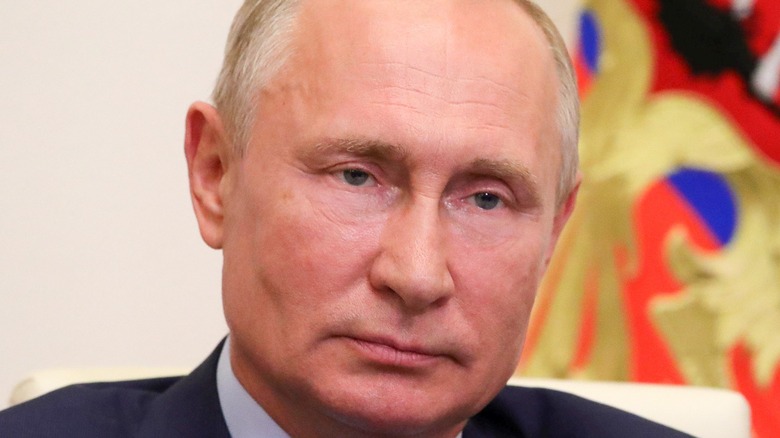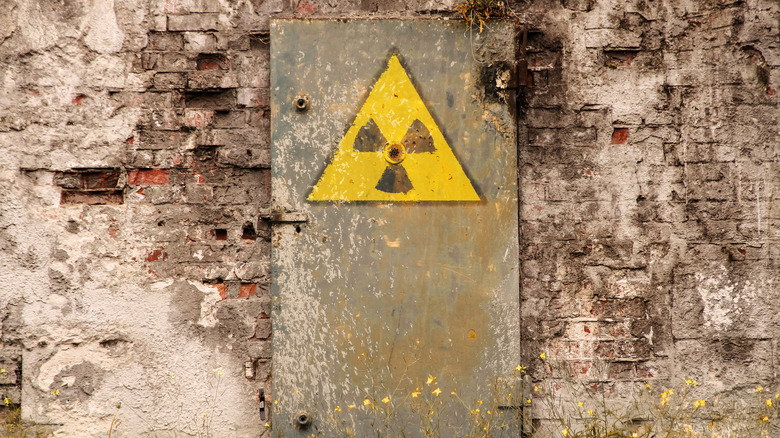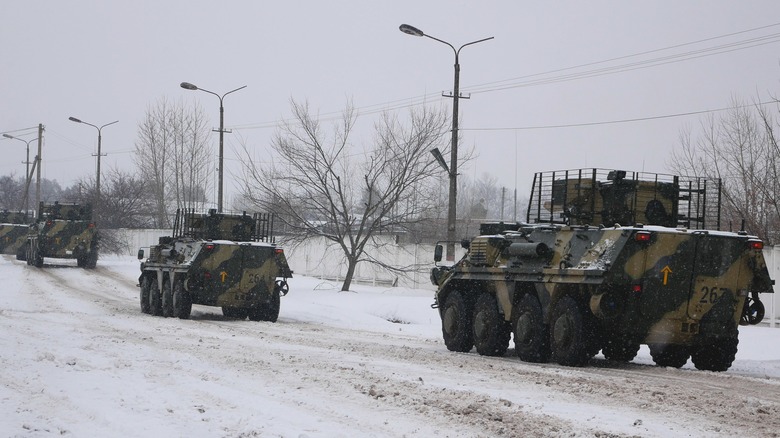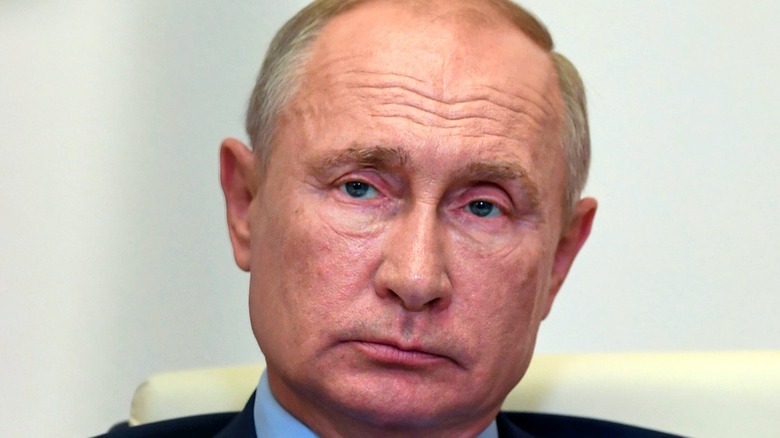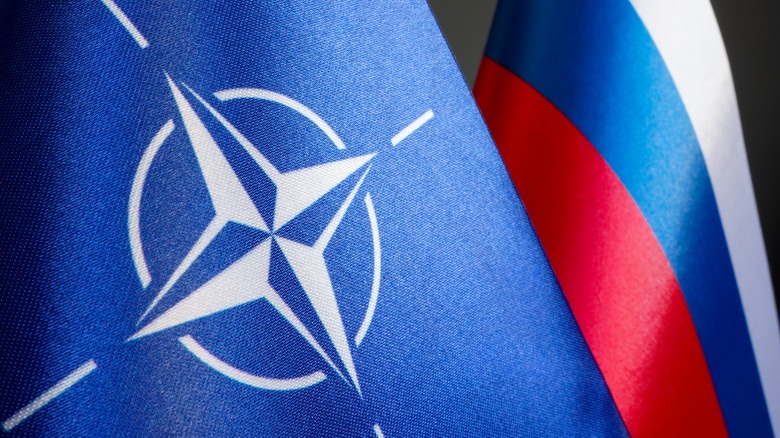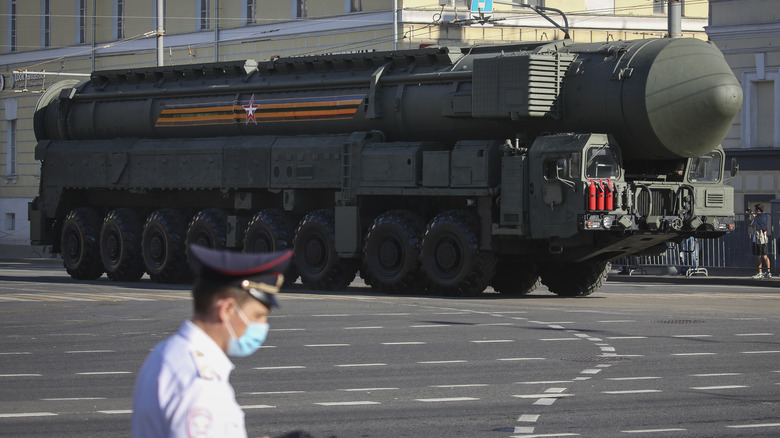Do We Know How Many Nuclear Weapons Russia Has?
The nuclear potential of Russia has long been a cause for concern. Throughout much of the last half of the 20th century, suspicions were high within and outside of the country regarding this new technology. Since the fall of the Soviet Union, which occurred from 1989 to around 1991, Russia's nuclear potential has been less of a source of tension for the United States and its allies. However, Russia's military advancement on Ukraine that began in February 2022 reignited fears about possible nuclear weapons in Russia.
After World War I, Russia's foreign relations with Western Europe and the U.S. turned sour. President Woodrow Wilson was against communism, and therefore against the government put in place by the Bolshevik party in 1917, which created the Soviet Union. Other previous war allies like France and the United Kingdom opposed this new Russian government as well. Russia's internal political battle took them out of World War I, and therefore rendered them unavailable to help the allies with their war efforts. Wilson's attempts to intervene as subtly as possible only set the stage for tense decades to follow (Hapner).
Citizens created bomb shelters during the Cold War
A second World War again brought the British, Americans, and Russians back on the same team. Known as the Allied Powers, their armies succeeded against Germany's Nazi regime and the war in the Pacific against Japan. However, History explains that as the Soviets aimed to increase their influence in Eastern Europe, suspicions quickly rose again. The North Atlantic Treaty Organization (NATO) was established at this time as well as an effort to ensure peace among Western Europe, the United States, and Canada. It has since expanded to include multiple countries closer to Russia, but not Russia itself.
The period known as the Cold War that followed World War II was characterized by fears of nuclear war. Having just used the atomic bomb on Japan, the U.S. became the Soviet Union's primary competition in a so-called "arms race." Citizens all across the U.S. prepared for attack by setting up fallout shelters. In December 2021, a photographer uncovered a Cold War-era shelter in Ukraine as well. With the knowledge that the U.S. and Soviet Union had enough nuclear weapons to cause irreversible damage to the planet (via Brockport), the threat of nuclear war was clearly felt around the world.
Russia's invasion of Ukraine reignited fears of nuclear war
The fears were certainly warranted, as shown by the Cuban Missile Crisis, a time when nuclear-armed Soviet missiles appeared in Cuba just 90 miles from American shores (via History). The crisis led to the Nuclear Test Ban Treaty signed by the U.S. the Soviet Union, and Great Britain in 1963.
The Soviets placed thousands of nuclear weapons in its peripheral territories such as Ukraine, Belarus, and Kazakhstan. After the Soviet Union disintegrated, these weapons returned to Russia and no others have been found in the independent countries that emerged from the Soviet Union, making for a successful denuclearization of the former Soviet countries (via Harvard).
As the world collectively avoided nuclear conflict during the Cold War, such weapons have not been used since the atomic bombs were dropped on Japan in 1945. Amid the heightened concerns following Russia's invasion of Ukraine, political scientist Peter Rudolf stated that the use of nuclear weapons stir up feelings of moral discomfort, as well as fear of the consequences given that employing them "could set off a chain that ends in mutual annihilation." There are added legal pressures as well. The use of a nuclear weapon would likely harm innocent civilians, which is illegal under international humanitarian law.
Putin put Russia's nuclear force on alert in February 2022
Since President Vladimir Putin's invasion of Ukraine began in February 2022, Putin has put Russia's nuclear force on "a special regime of alert." In early March 2022, he sent nuclear-armed Russian submarines and mobile missile units into military exercises (via DW). This raises questions about Putin's future war tactics and what weapons Russia could be harboring.
President Vladimir Putin justified his decision to raise the risk alert of Russia's nuclear forces because he claims to be experiencing "aggressive statements" from western nations (via Express). The Russian Ministry of Defense confirmed the use of regulated thermobaric weapons in March 2022, but not nuclear ones. Thermobaric weapons include thermobaric bombs which consist of a fuel container with two explosive charges. They are also called vacuum or aerosol bombs. The Russian military calls them "heavy flamethrowers." According to Arms Control Center, thermobaric weapons have less devastating effects than nuclear ones. Even still, one of these "vacuum bombs" killed 70 soldiers in Ukraine in February 2022.
NATO has long hoped to deter nuclear war
Among the 30 members of NATO, the United States has the largest nuclear force, with about 5,800 nuclear warheads. France has around 300 warheads, and the United Kingdom has about 215. Given the secrecy of nuclear development since they were first used, these numbers are all estimates as each country keeps such information top secret. The largest powers of NATO have deterrence policies with regard to nuclear war. Europe holds the idea that an enemy would be foolish to attack a NATO country (or countries) with nuclear weapons because that enemy would have to expect a counterattack (via DW).
The Brussels Times reports that the U.S. stores around 150 nuclear weapons in a few different countries throughout Europe, including Belgium, the Netherlands, Italy, and Turkey. No matter the location, the U.S. has the ability to decide whether or not to use them. The same power rests in the hands of France and the U.K. regarding their respective arsenals (via DW). This is part of NATO's nuclear sharing agreements. Such agreements are part of NATO's goal of deterrence as its means of defense against nuclear warfare.
Russia has the largest nuclear arsenal in the world
Express estimates that Russia has approximately 4,447 warheads, which are devices that trigger a nuclear explosion. Out of this number 1,588 are deployed. 812 are on land while 576 are on submarine-launched ballistic missiles, and 200 are at bomber bases. 977 more strategic warheads and 1,912 nonstrategic warheads are kept in reserve. Though all of these numbers are estimates, they still collectively give Russia the largest nuclear arsenal in the world based on these October 2021 estimates.
Express writer James Gray states that because the United States, France, and the United Kingdom are the most powerful NATO members, they are the most likely targets should nuclear war break out. If the U.K. was in the line of fire, the U.S. Strategic Defense Initiative could be used to intercept and destroy it. This initiative dates back to 1984 at the height of Cold War nuclear preparation. Even still, NATO's plan for nuclear war is deterrence simply due to the threat of retaliation.
